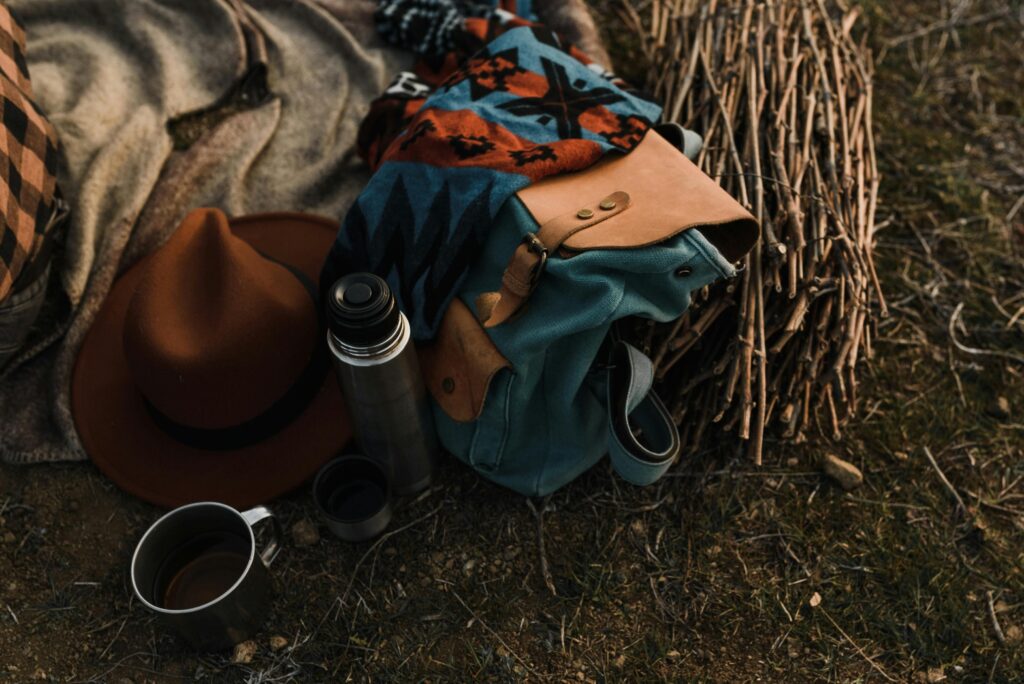
The Humble Thermos Vacuum Flask and the Art
I spilled an entire cup of scalding coffee on my lap in the winter of ‘02. I was sitting in my car outside the Chicago Board of Trade, trying to gulp down a cheap, gas-station brew before the opening bell, my hands shaking from the cold and the caffeine. The lid popped off. The heat seeped through my suit pants. And as I sat there, frustrated and slightly burned, I had a moment of clarity that had nothing to do with market fundamentals and everything to do with the simple, profound genius of the thermos vacuum flask.
We spend so much of our investing lives chasing the next hot thing—the stock that’s about to pop, the crypto that’s about to moon, the trend that promises to make us rich overnight. We’re like that gas-station cup, leaking heat energy frantically into the cold air, trying to stay warm for just a few more minutes. It’s a frantic, exhausting way to operate. But what if the ultimate secret to building wealth isn’t about generating more heat? What if it’s simply about preserving the heat you already have?
This, my friends, is where our unassuming teacher, the thermos vacuum flask, comes in. Its design is a masterpiece of patience, a lesson in insulation, and a perfect metaphor for the kind of investing that actually works. It doesn’t try to be a microwave, violently exciting molecules. It aspires to be a fortress, protecting its valuable contents from the tempestuous world outside. It’s the antithesis of the get-rich-quick mentality and the very embodiment of a principle I learned the hard way: compounding doesn’t work if your returns are constantly leaking out. Let’s unpack this.
The Two-Wall Principle: Why Isolation is Your Greatest Ally
Pick up a quality thermos vacuum flask. Its power isn’t in a thick, single wall of steel. It’s in the gap—the meticulously engineered space between the inner and outer walls. This isn’t empty space; it’s a vacuum, a void deliberately created to remove the one thing that allows energy to transfer: air molecules.
In investing, your portfolio is the contents of the flask. The outside world—the 24/7 financial news cycle, the fear-mongering headlines, your cousin’s hot stock tip at a barbecue, the euphoria of a bull market, the despair of a correction—is the extreme temperature trying to get in. Your job is to create that vacuum.
This means building a psychological barrier between your carefully considered strategy and the constant noise of the market. It’s the two-wall principle of wealth preservation. Your inner wall is your asset allocation and your selection of high-quality companies or funds. Your outer wall is your unshakable plan, your long-term perspective, and your emotional discipline.
The vacuum in between? That’s your conscious decision to ignore the noise. You create it by turning off the financial news for weeks at a time, by not checking your portfolio daily, and by understanding that market volatility is not risk; it’s just weather. Risk is permanently losing capital because you let the outside temperature dictate your actions.
The Power of the Vacuum: Doing Nothing is a Superpower
Here’s the most counterintuitive part: the vacuum itself is… nothing. It’s a state of absence. The thermos vacuum flask does its best work not by doing something, but by preventing something from happening. This is the hardest lesson for investors to learn. We are hardwired for action. We feel that during a market downturn, we must do something—sell, reposition, hedge. Often, that “something” is precisely the wrong move.
The vacuum is your strategic inertia. It’s the power of sitting on your hands. Think about the greatest investors of our time. They aren’t celebrated for their frantic trading. They’re celebrated for their phenomenal patience. They found a great company, understood its intrinsic value, and then let the miracle of compounding work over decades. They created a vacuum seal between their investment and the short-term gyrations of Mr. Market’s moods.
Every time you feel the urge to react to a headline, ask yourself: “Am I about to puncture the vacuum?” Is this action based on a fundamental change in the long-term value of my investment, or is it a reaction to temporary temperature changes outside? More often than not, the most profitable move is to consciously do nothing. Preserve the environment for your wealth to grow undisturbed.
Material Matters: The Inner Wall and Economic Moats
Not all flasks are created equal. A cheap one might use thin, reactive steel that imparts a metallic taste to your coffee. A high-quality one uses a robust, stainless steel or glass interior that is inert. It doesn’t interact with the contents; it merely holds and protects them.
This is a direct parallel to the concept of an economic moat, a term popularized by the analysts at Morningstar. A company with a wide economic moat has a durable competitive advantage—like a powerful brand, network effects, or cost advantages—that protects its profits from competitors, much like a castle’s moat protects it from invaders. When you invest, you are looking for companies with these strong, inert “inner walls.”
You want a business that is so well-defended that the chaotic outside economy can’t easily erode its profitability. A flimsy business model is like a cheap plastic liner; it might hold your coffee, but it will leach chemicals and eventually crack under stress.
Your job as an investor is to find the stainless steel—the companies built to last, that won’t react negatively to the challenges of the business cycle and will preserve the quality of your investment over time.
The Lid: Your Final Layer of Defense
You can have the best vacuum-sealed walls in the world, but if you leave the lid off, your coffee will get cold. The lid is the final, crucial seal. It’s the last line of defense against spillage and the slow, insidious loss of heat through convection.
In your financial life, the lid is your emergency fund. It’s your cash buffer. Without it, you are one unexpected car repair, one medical bill, or one period of unemployment away from having to crack open your portfolio—to puncture the vacuum—at the worst possible time. I’ve seen too many people with brilliant long-term strategies forced to sell wonderful assets at a loss during a market downturn because they needed cash and didn’t have that lid.
Your emergency fund is what allows you to keep the lid screwed on tight on your long-term investments, no matter what life throws at you. It’s not glamorous. It doesn’t generate high returns sitting in a savings account. But its value is incalculable because it protects everything else. It ensures that your strategy remains intact.
More Read: Marketing
Heat Loss is a Silent Killer
A good thermos vacuum flask doesn’t just prevent a catastrophic spill; it fights the slow, gradual seepage of temperature. This is the most insidious risk to your wealth: not the dramatic crash, but the silent erosion of purchasing power through inflation and fees.
Think of inflation as the constant, chilly air trying to cool your coffee. If your returns are only meagerly positive after inflation and taxes, you’re still losing heat. You’re just losing it so slowly you might not notice until it’s too late and your retirement savings have gone lukewarm. High investment fees—expense ratios on funds, advisor fees, transaction costs—are like a tiny, hairline crack in the flask. You don’t see it, but over a 30-year journey, a significant amount of your heat leaks out through it.
The defensive design of the flask is a constant reminder to be vigilant against these silent wealth killers. It pushes you toward low-cost index funds, to be mindful of tax implications, and to always, always consider the real return (return after inflation). Preservation of capital isn’t about hiding money under a mattress; it’s about actively defending its value against these quiet threats.
From Frantic to Calm: A Shift in Mindset
Before my thermos revelation, my investing mindset was all about the microwave. I wanted things hot, and I wanted them now. I was constantly zapping my portfolio, shifting in and out of positions, chasing the next jolt of adrenaline (and occasionally, returns). It was exhausting and, frankly, not very effective.
Adopting the thermos vacuum flask mentality changed everything. It shifted my focus from aggressive growth to intelligent preservation. The goal was no longer to boil water instantly; it was to keep my already-warm coffee hot for the entire, long drive. This is a calmer, more sustainable way to invest. You make your decisions deliberately and thoughtfully. You put your excellent companies or funds into the flask, you screw the lid on tight (your emergency fund), and you let the insulating power of time and compounding do the work.
You stop worrying about the daily temperature outside. A storm might be raging, but inside your flask, your coffee is still hot. Your wealth is still compounding. This peace of mind is, in many ways, more valuable than the extra percentage points of return you might chase with a riskier, more frantic strategy.
Your Portfolio is a Flask. Build it Accordingly.
So, let’s make this practical. How do you build a thermos vacuum flask portfolio?
First, choose a robust inner wall. This is your core allocation of high-quality, durable assets—think low-cost total market index funds or a thoughtfully selected group of companies with wide economic moats. These are your stainless-steel linings, chosen for their longevity and inertness.
Second, create the vacuum. This is your investor policy statement—a written set of rules for yourself that dictates your asset allocation, your rebalancing strategy, and your criteria for buying and selling. This document is your vacuum seal. When emotion runs high, you defer to your pre-written rules. This is how you prevent the outside temperature from affecting your internal environment.
Third, never forget the lid. Build and maintain that cash emergency fund. It is not part of your investment portfolio; it is the protector of it.
Finally, remember that the flask’s purpose is not to create heat but to conserve it. Your job as an investor isn’t to magically generate 20% returns every year.
Your job is to earn a reasonable return and, most importantly, to conserve that capital, to protect it from the cold winds of inflation, fees, and panic, so that the miracle of compounding can work its magic over the long, long haul.
It’s a slower, quieter philosophy. You won’t have many exciting stories to tell at parties about your daring trades. But you will, decades from now, be able to pour yourself a cup of financial security that is still satisfyingly, remarkably warm. And that’s the whole point. For more insights that stand the test of time, keep an eye on the updates from Great News Live.

Responses